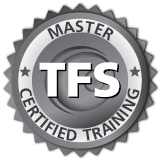Objectives
Students will learn Layer2 and Layer3 principles, configuration standard practices, and design and implementation design requirements. This course benefits individuals responsible for configuring and monitoring devices running JUNOS Software in an Enterprise network.
Students will learn to:
- Describe typical uses of static, aggregate, and generated routes
- Configure and monitor static, aggregate, and generated routes
- Explain the purpose of Martian routes and add new entries to the default list
- Describe typical uses of routing instances
- Configure and share routes between routing instances
- Describe load-balancing concepts and operations
- Implement and monitor Layer 3 load balancing
- Illustrate benefits of filter-based forwarding
- Configure and monitor filter-based forwarding
- Explain the operations of OSPF
- Describe the role of the designated router
- List and describe OSPF area types
- Configure, monitor, and troubleshoot OSPF
- Describe BGP and its basic operations
- Name and describe common BGP attributes
- List the steps in the BGP route selection algorithm
- Describe BGP peering options and the default route advertisement rules
- Configure and monitor BGP
- Describe IP tunneling concepts and applications.
- Explain the basic operations of generic routing encapsulation (GRE) and IP over IP (IP-IP) tunnels
- Configure and monitor GRE and IP-IP tunnels
- Describe various high availability features supported by the Junos OS
- Configure and monitor some of the highlighted high availability features
- List the benefits of implementing switched LANs
- Describe transparent bridging concepts and operations
- Describe terms and design considerations for switched LANs
- List enterprise platforms that support Layer 2 switching
- Configure interfaces for Layer 2 switching operations
- Display and interpret the Ethernet switching table
- Explain the concept of a VLAN
- Describe access and trunk port modes
- Configure and monitor VLANs
- Describe voice VLAN and native VLAN concepts
- Explain inter-VLAN routing operations
- Configure and monitor inter-VLAN routing
- Explain when a spanning tree is required
- Describe STP and Rapid Spanning Tree Protocol (RSTP) operations
- List some advantages of using RSTP over STP
- Configure and monitor RSTP
- Describe the bridge protocol data unit (BPDU), Loop, and Root protection features
- Configure and monitor the BPDU, Loop, and Root protection features
- List and describe various port security features
- Configure and monitor port security features
- Describe the storm control feature
- Configure and monitor storm control
- Describe firewall filter support for EX Series Ethernet Switches
- Implement and monitor the effects of a firewall filter
- Describe the basic concepts and operational details of a virtual chassis
- Implement a virtual chassis with multiple EX4200 switches
- List and describe some features that promote high availability
- Configure and monitor high-availability features
Lectures
JIR
Day 1
Chapter 1: Course Introduction
Chapter 2: Protocol-Independent Routing
- Static Routes
- Aggregated Routes
- Generated Routes
- Martian Addresses
- Routing Instances
Chapter 3: Load Balancing and Filter-Based Forwarding
- Overview of Load Balancing
- Configuring and Monitoring Load Balancing
- Overview of Filter-Based Forwarding
- Configuring and Monitoring Filter-Based Forwarding
Chapter 4: Open Shortest Path *First
- Overview of OSPF
- Adjacency Formation and the Designated Router Election
- OSPF Scalability
- Configuring and Monitoring OSPF
- Basic OSPF Troubleshooting
Day 2
Chapter 5: Border Gateway Protocol
- Overview of BGP
- BGP Attributes
- IBGP Versus EBGP
- Configuring and Monitoring BGP
Chapter 6: IP Tunneling
- Overview of IP Tunneling
- GRE and IP-IP Tunnels
- Implementing GRE and IP-IP Tunnels
Chapter 7: High Availability
- Overview of High Availability Networks
- GR
- Graceful RE Switchover
- Nonstop Active Routing
- BFD
- VRRP
Appendix A: IPv6
Appendix B: IS-IS
JEX
Day 3
Chapter 1: Course Introduction
Chapter 2: Layer 2 Switching
- Ethernet Bridging Basics
- Terminology and Design Considerations
- Overview of Enterprise Switching Platforms
- Enabling and Monitoring Layer 2 Switching Operations
Chapter 3: Virtual Networks
- Overview of VLANs
- Configuring and Monitoring VLANs
- Voice VLAN
- Native VLAN
- Routed VLAN Interfaces
Chapter 4: Spanning Tree
- Spanning Tree Protocol
- Rapid Spanning Tree Protocol
- Configuring and Monitoring STP and RSTP
- Protection Features: BPDU Protection
- Protection Features: Loop Protection
- Protection Features: Root Protection
Day 4
Chapter 5: Port Security
- MAC Limiting
- DHCP Snooping
- Dynamic ARP Inspection (DAI)
- IP Source Guard
Chapter 6: Device Security and Firewall Filters
- Storm Control
- Firewall Filters
Chapter 7: Virtual Chassis
- Overview of Virtual Chassis
- Configuring and Monitoring a Virtual Chassis
Chapter 8: High Availability Features
- Overview of High Availability Networks
- Link Aggregation Groups
- Redundant Trunk Groups
Prerequisites: Level 2
Students should have basic networking knowledge and an understanding of the Open Systems Interconnection (OSI) reference model and the TCP/IP protocol suite. Students should also attend the Introduction to the Junos Operating System (IJOS) course prior to attending this class.
Target Audience
Designed for experienced networking professionals with beginner to intermediate knowledge of routing and switching implementations in Junos.


